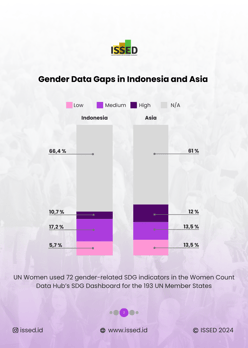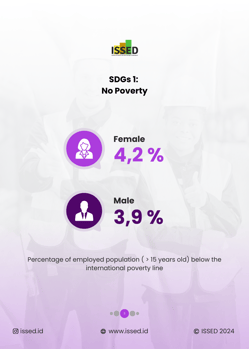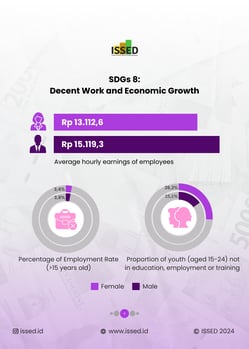Women and Sustainable Development
INFOGRAPHICS
4/21/2024
Throughout her life, RA Kartini fought for gender equality, education for women, and economic independence. After more than a century since her passing, what is the condition of Indonesian women today? Today, we see more and more women studying up to college, working in various fields and career levels, traveling comfortably, and accessing various public services. Women are also able to exercise their voting rights and run for elections. In Indonesia, the projected results of the 2024 House of Representatives elections show a female representation rate of 22.1% (128 seats out of 580 House seats), up 1.6% from the 2019 elections (Perludem, 2024).
The world has come a long way since the 1900s, but there are still many challenges facing women. Based on UN Women data, there are gaps in various fields, especially related to unpaid care and household chores. On one hand, women do have the opportunity to work. But have we really achieved gender equality and workplace safey? Unfortunately, discrimination, gender related disparity in salary and career opportunities, and sexual harassment are still major problems in the professional world. One of the first steps to closing this gap is to ensure gender data is available in development indicators.
In 2015, gender equality was recognized and affirmed as a prerequisite for realizing sustainable development and was also set as one of the main goals, the SGD 5. Sustainable Development Goal (SDG) 5 is a promise to not just promote women's rights, but to "achieve" gender equality and empower all women and girls.
Let's reflect on the gap in gender data on Sustainable Development Goal (SDG) indicators. As of December 2020, there are only 33.6% of indicators that can be used to evaluate the SDGs from a gender perspective. It can be seen that Indonesia's score is still below the Asian average for the assessment of SDG gender indicators by UN Women. Based on the data, SDG 1: No Poverty shows the population employed women below the poverty line is still higher than employed men. This is also in line with SDG 8: Decent Work and Economic Growth, where the average hourly earnings of female employees are lower than men. In addition, the proportion of young women (aged 15-24) who are not in education, employment or training is also much higher than men.
Despite seeing a significant progress, there are still many problems in achieving gender equality in Indonesia. We need to move together to continue to fight for gender equality and ensure that every step taken towards sustainable development includes a holistic gender perspective. By closing gaps in gender data and continuing to drive positive change in society, we can achieve Kartini's vision and build a more inclusive and equitable future for all.
Happy Kartini Day,
21st April 2024






